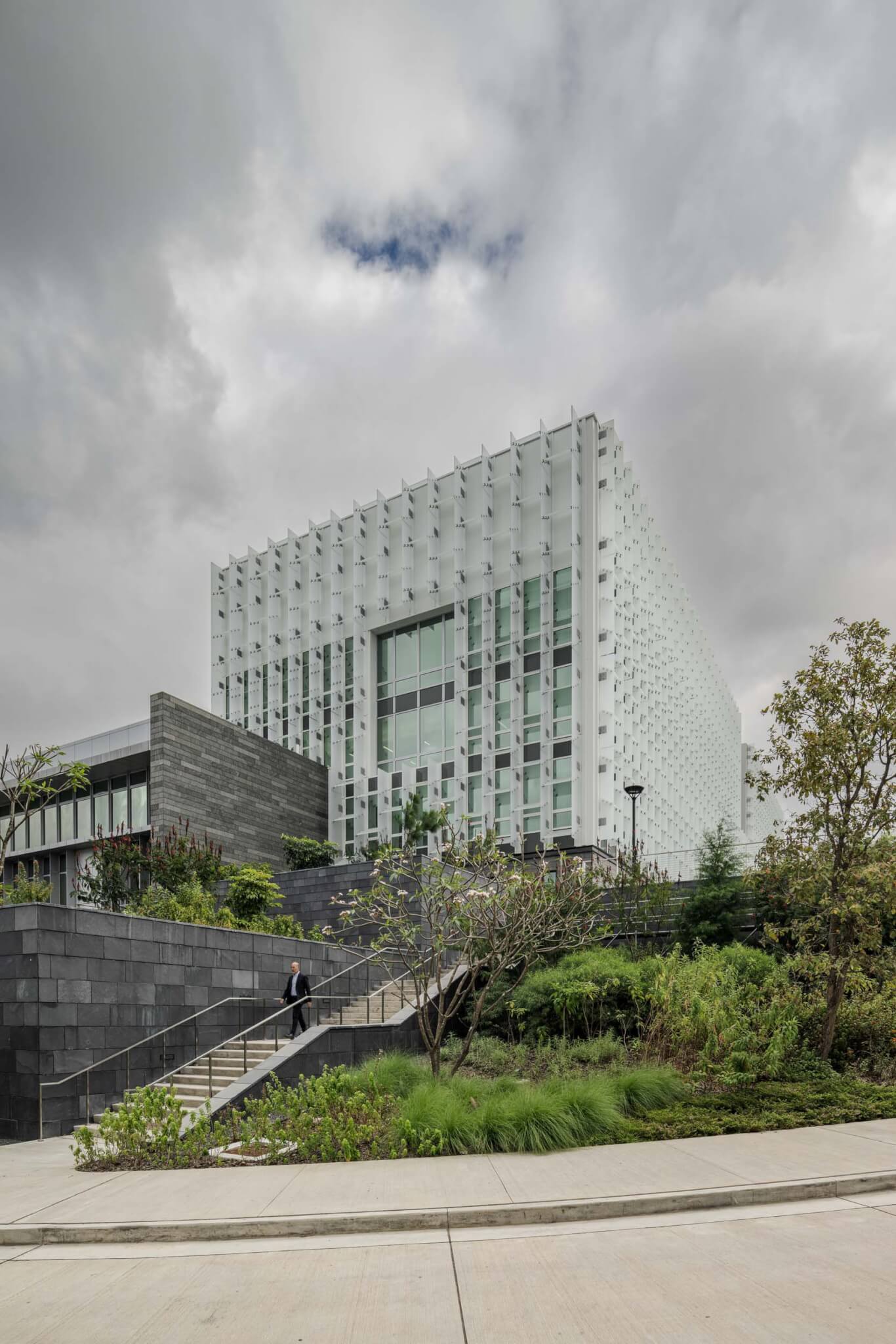Design Architect: Miller Hull Partnership
Location: Guatemala City, Guatemala
Completion Date: 2023
In 1999 in an effort to improve embassy security, the U.S. State Department launched its
The bulk of the complex is clad in Virginia Mist granite, while a rectangular glass volume, fit with a glazed Brise-soleil, emerges from the top of the structure. Three finishes of granite that vary in terms of color and texture were selected for the facade. Along long spans of site-wall, Miller Hull placed large base stones which narrow as they rise the height of the wall.

The compound was constructed on the site of a former borrow pit, an area from which soil was excavated for use in a neighboring development. The resulting 82-foot grade change necessitated a terraced layout to accommodate the eight-story building. The building acts as a retaining wall with counterfort walls implemented to stabilize soil.
The embassy’s open-outdoor spaces drew inspiration from the architectural forms of the Maya civilization. Mathew Albores, Miller Hull’s project manager for the embassy project, told AN that the site planning was influenced by “the organizational layout of the ceremonial and residential planning of Maya cities that we visited including Tikal, Yaxha, and Copan.” The main chancery building was designed to reference the temple architecture of the Maya. Local-plant species surrounding the base of the building mimic the way ancient temples appear to “rise” out of the canopy





